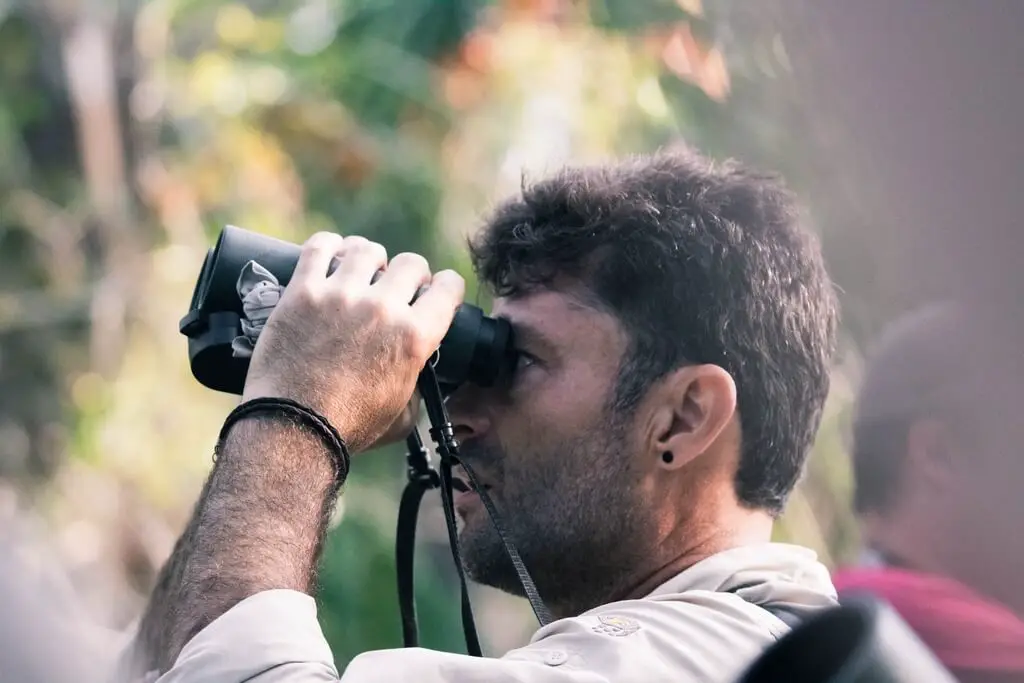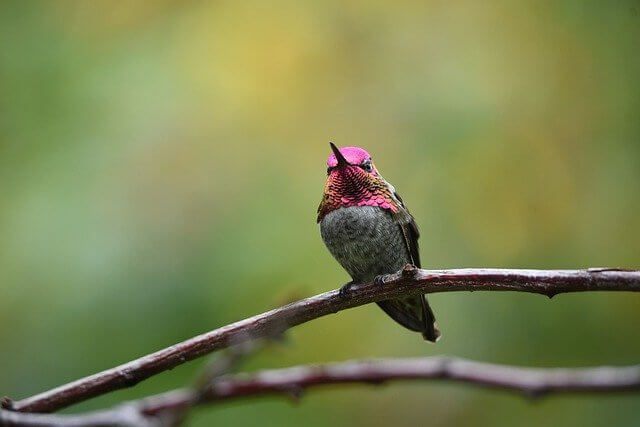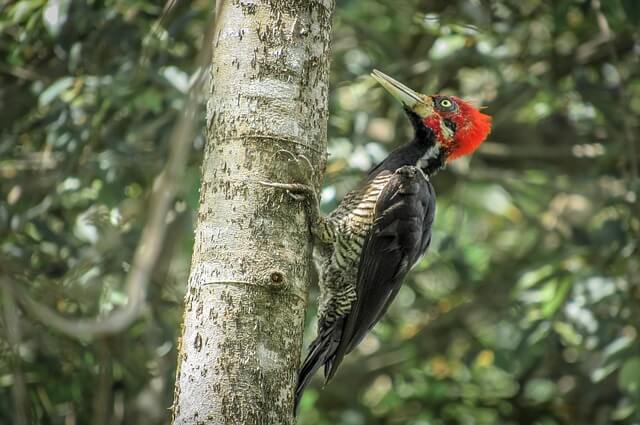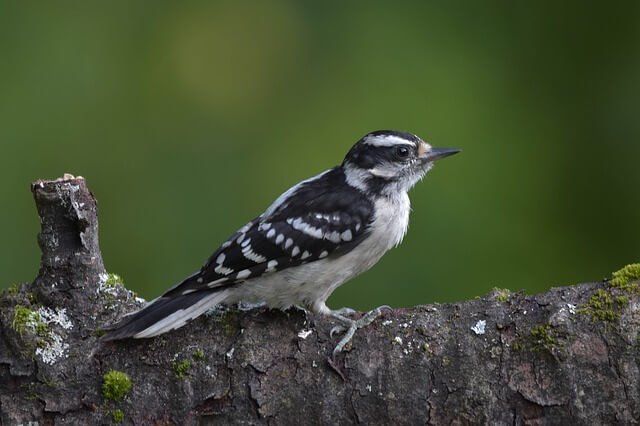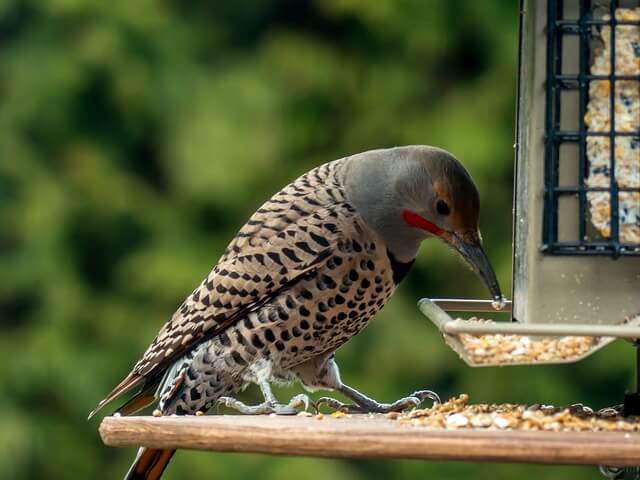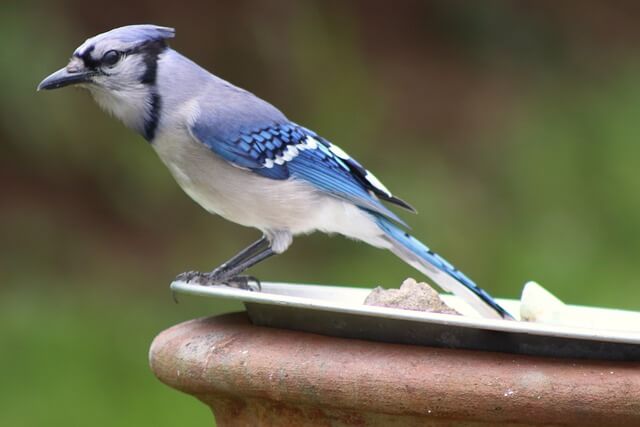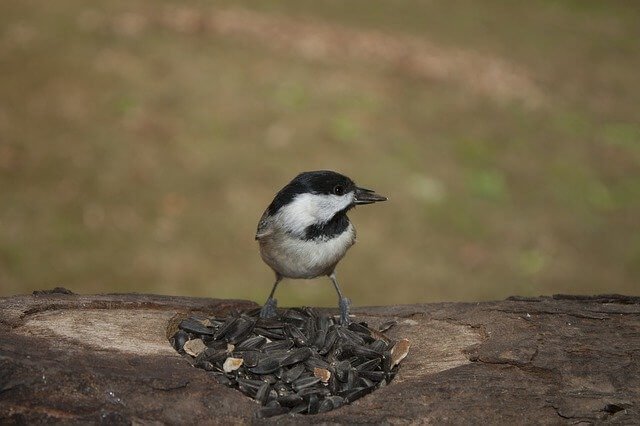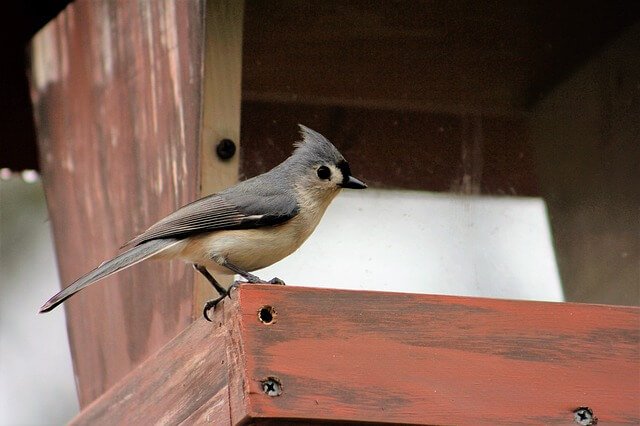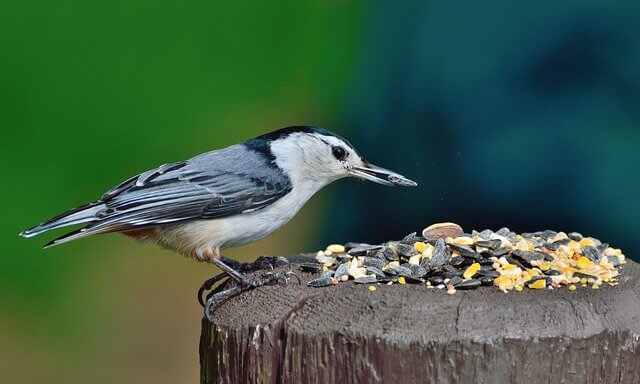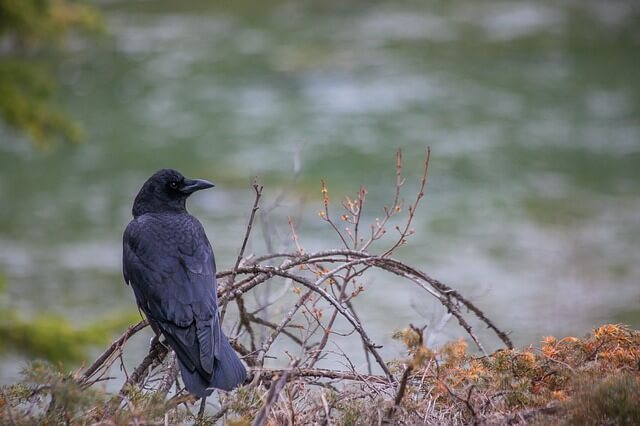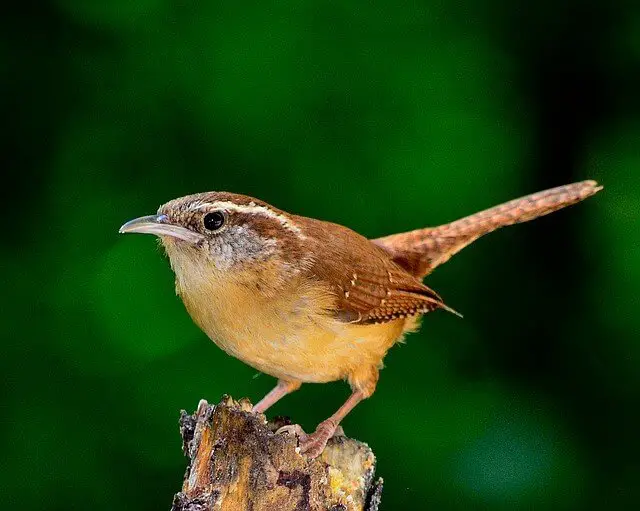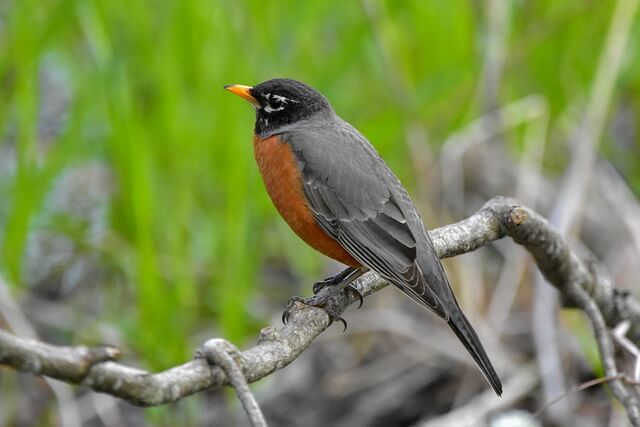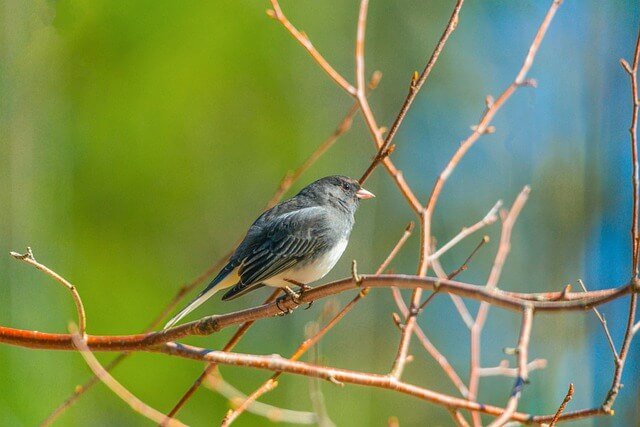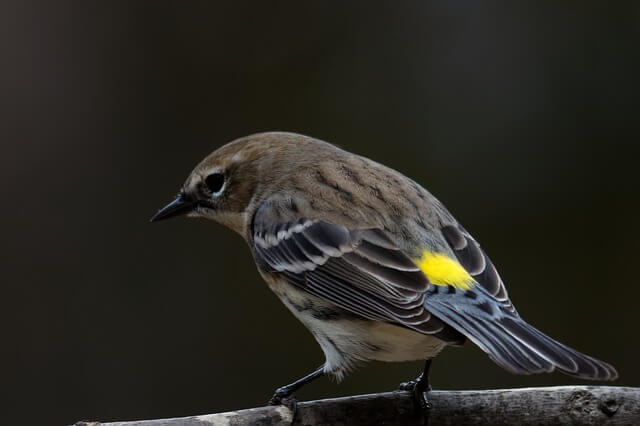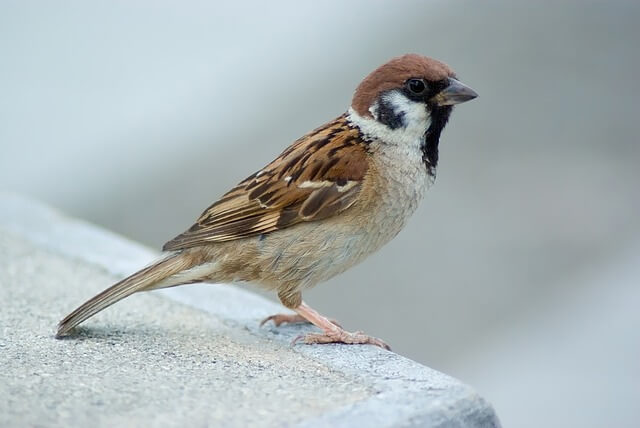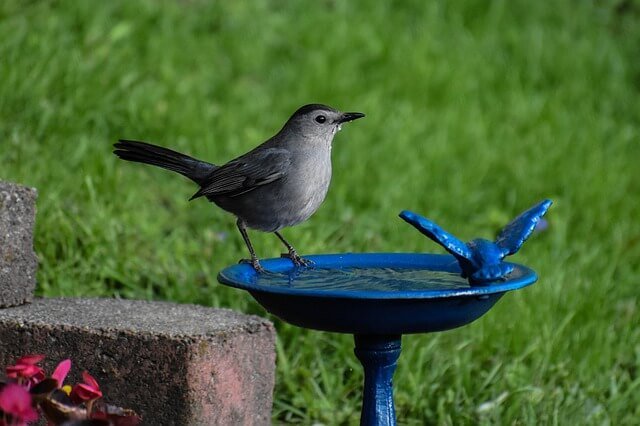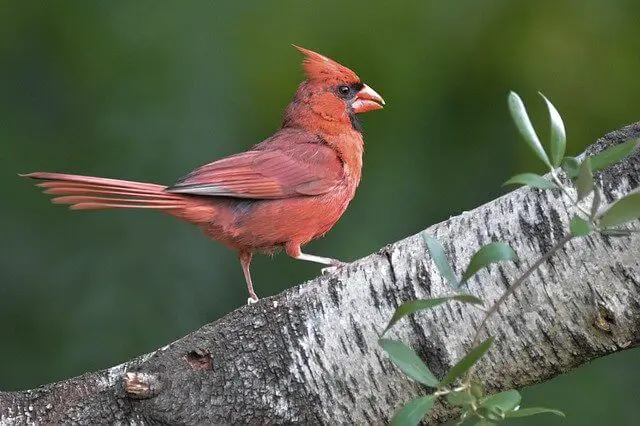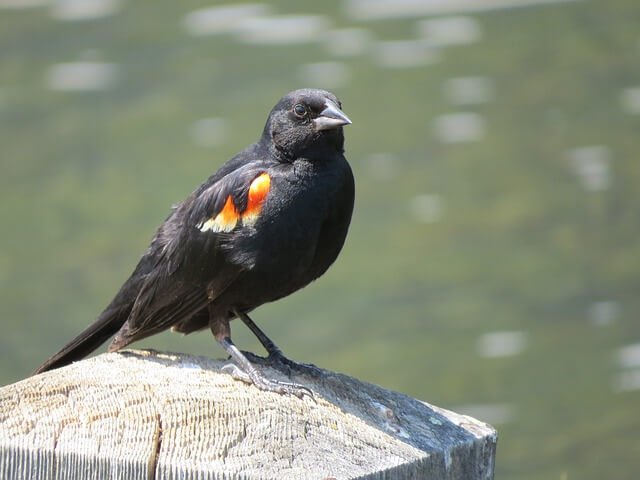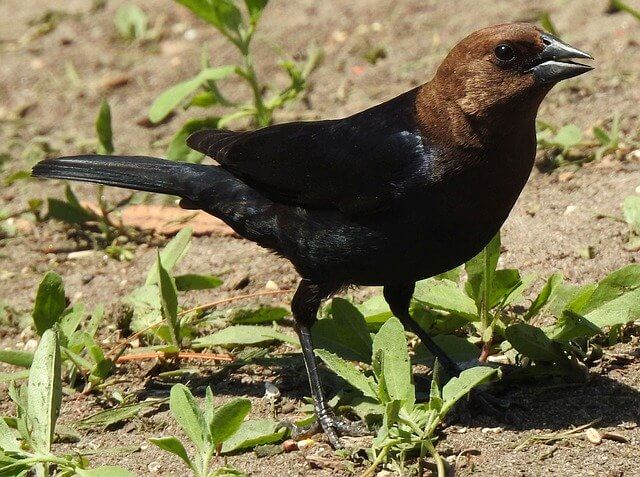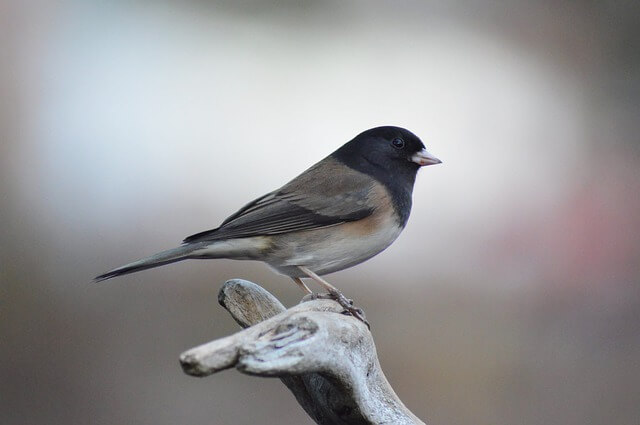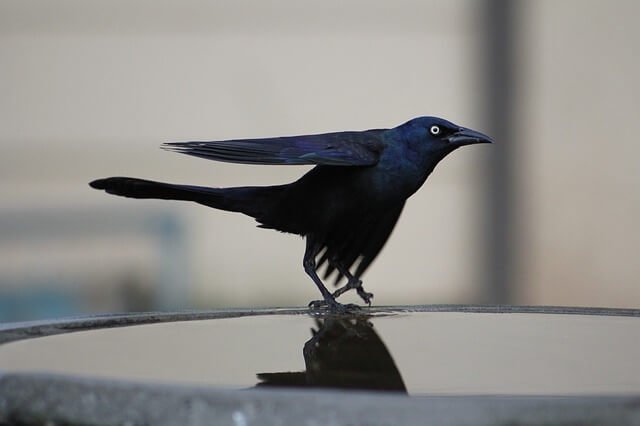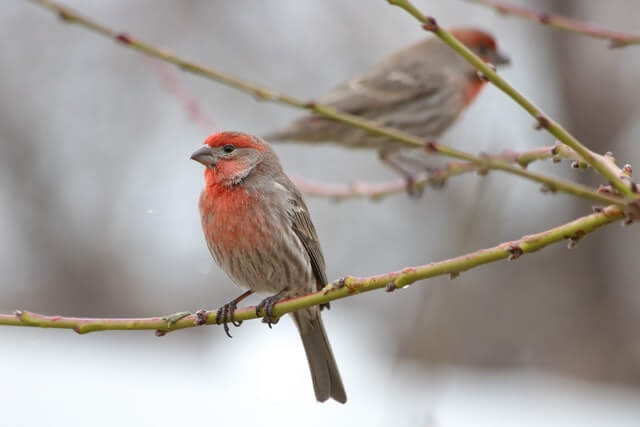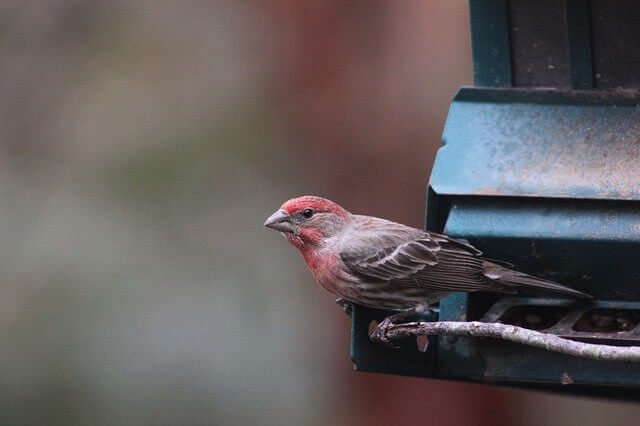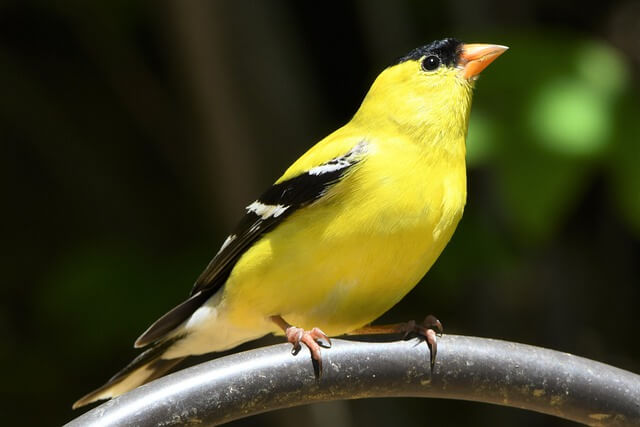Embark on a journey through Virginia’s diverse landscapes with our ultimate guide to the 29 most common bird species! From the majestic Northern Cardinal to the charming Carolina Chickadee, Virginia’s forests, wetlands, and suburban areas host a rich tapestry of avian life.
In this comprehensive guide, we’ll uncover the unique characteristics, habitats, and behaviors of each species, offering valuable insights for bird enthusiasts and nature lovers alike.
Table of Contents
- 1 Most Common Birds in Virginia
- 1.1 Ruby-Throated Hummingbird
- 1.2 Red-Headed Woodpecker
- 1.3 Downy Woodpecker
- 1.4 Hairy Woodpecker
- 1.5 Northern Flicker
- 1.6 Pileated Woodpeckers
- 1.7 Yellow-Bellied Sapsucker
- 1.8 Blue Jay
- 1.9 Carolina Chickadee
- 1.10 Tufted Titmouse
- 1.11 White-Breasted Nuthatch
- 1.12 American Crow
- 1.13 Carolina Wren
- 1.14 Eastern Bluebird
- 1.15 American Robin
- 1.16 Northern Mockingbird
- 1.17 European Starlings
- 1.18 Yellow-Rumped Warbler
- 1.19 Eastern Towhee
- 1.20 American Tree Sparrow
- 1.21 Gray Catbird
- 1.22 Northern Cardinal
- 1.23 Red-Winged Blackbird
- 1.24 Brown-Headed Cowbird
- 1.25 Dark-Eyed Junco
- 1.26 Common Grackle
- 1.27 Purple Finch
- 1.28 House Finch
- 1.29 American Goldfinch
- 2 Frequently Asked Questions
- 2.1 What is the rarest bird in Virginia?
- 2.2 What is the largest hawk in Virginia?
- 2.3 Do ravens live in Virginia?
- 2.4 Do cranes live in Virginia?
- 2.5 Are there roadrunners in VA?
- 2.6 Do wrens live in Virginia?
- 2.7 Do ospreys live in Virginia?
- 2.8 Are there cuckoos in Virginia?
- 2.9 Are there herons in Virginia?
- 3 Author
Most Common Birds in Virginia
Ruby-Throated Hummingbird
The Ruby-throated Hummingbird, is the North American species native to the state of Ohio, but with an estimated population of over one million throughout the continent. This bird ranges in size 7 -10 cm length and a weighing approximately 3.1 g.
With its unique, flamboyant, and colorful body, the Ruby-throated Hummingbird has earned itself quite a reputation as one of the most spectacularly beautiful birds in the world. This bird is considered by many to be the most beautiful of all hummingbirds; there is just no denying that.
If you wish to view a Ruby-throated Hummingbird in Virginia, the best time is from late spring through early summer. They are also extremely active at this time because they will have started breeding.
Many times their migration path can take them as far south as the Gulf of Mexico and as far north as the Great Lakes, but for the most part they return to Virginia each year to nest and raise young.
Red-Headed Woodpecker
There have been reports in the news about a red-headed woodpecker in Virginia. Red-headed Woodpeckers are the largest species of woodpeckers in the eastern United States, ranging from 7.5-9.1 in (19-23 cm) long and a weighs 56-91 g. A red-headed woodpecker in Virginia is known as a “Red-headed Woodpecker” in the state.
The most common habitat for this bird in Virginia is in the woods and swamps of the Appalachian Mountains and is commonly seen congregating in large numbers along highways, overgrown woodlands, fields, and in dense forested areas.
However, the bird can be found almost anywhere in the eastern half of the country and is common in North Carolina and Maryland, in the Blue Ridge Mountains of North Carolina, the southern part of New Jersey and West Virginia, as well as Pennsylvania and Connecticut.
Related Post: Interesting Red-Headed Woodpecker Facts (Explained)
Downy Woodpecker
The Downy Woodpeckers in Virginia is not the same as the Downy Woodpeckers that you find on the east coast of the US. The downy woodpeckers on the east coast of the US are the American species of the Woodpeckers.
These birds are a bit different from their counterparts that we have seen in Virginia over the years. The downy woodpeckers have white-fronted heads with dark chests and black heads with grayish-white throats. The bird is about 7 in. (14-17 cm) long and weighs 21-28 g.
There are actually several species of the Downy Woodpeckers in Virginia. They are commonly found in Virginia Beach, the Shenandoah Valley, Loudoun County, and in the far west of the state.
In the summer, these birds are more common than during the winter months. They do not become scarce on the east coast of the US. Their natural predators are mainly hawks and owls. Bald eagles are the most frequent type of predator for these birds.
Related Post: How to Attract Downy Woodpeckers to Your Yard? (Easy!)
Hairy Woodpecker
The Hairy Woodpecker is a species of woodpecker measuring just 5.5-6.7 in. long, and weighs 21-28 g. They are found in North America, but they also live as far south as Central America and into South America.
These birds can be seen living in the coniferous forests that cover these regions or mixed hardwood forests where there are large amounts of pine trees.
They have a variety of habitats from high altitudes to low altitudes, preferring cooler temperatures. They are omnivores which means they eat both plants and animals such as insects, worms, berries, seeds, nuts and acorns.
Northern Flicker
The Northern Flicker is a bird is found in both the Eastern and Western states of the United States. This bird is 12-14 in. long and weighs around 120 g.
They are commonly found in the mountains and forests in parts of the South. Most often these birds are seen around midnight and are more likely to land on the ground as opposed to flying. The Northern Flicker can be seen throughout the winter months as it migrates up into the colder northern regions of the country.
In the summer, many times flickers will migrate out of the forest and into the coastal areas where they like to feed on young birds and birds eggs during mating season.
Related Post: How to Attract Northern Flickers to your Backyard (Easy)
Pileated Woodpeckers
Pileated Woodpeckers are a species of woodpecker that live in the Eastern United States. These birds typically inhabit deciduous forests, which provide them with plenty of trees to peck on for food and building their nests. This is one of the biggest species of woodpeckers at 18 in. long and weighs 250-400 g.
Their upper body is black with white markings along the neck. The underside is white with yellowish markings on it. These birds are mostly found around the edges of hollowed-out trees and the wings are feathered like a dove.
Related Post: How to Attract Pileated Woodpeckers to your Yard (Fast)
Yellow-Bellied Sapsucker
The Yellow-Bellied Sapsucker bird is a migratory bird that lives in Virginia. They can be found all over, but mostly on deciduous trees such as maple and oak. They feed on insects from the tree bark, sap seeping from wounds or other natural sources of sugar. This bird is (7.5 to 8.3 in.) long and weighs from 35 to 62 g.
Yellow-Bellied Sapsuckers have a short lifespan in captivity, reaching as old as 6.7 years, and in fact they do not mate until they reach their mature age, but even then they rarely mate at all, preferring to remain solitary.
This species of woodpecker is mostly found in Virginia and Maryland, but it can also be seen occasionally on Cape Cod.
Related Post: Sapsucker Bird Facts Explained
Blue Jay
Blue Jays are part of the family Corvidae, and are found throughout North America. This bird measures between 9-12 in. long and weighs from 70-100 g. They can be identified by their bright blue plumage, which gives them their name.
Their habitat is open woodland, parkland, farmland and suburbs with trees. The Blue Jay’s diet consists mainly of small animals such as mice, birds and insects; they also eat seeds, nuts and berries.
Blue Jay is migratory birds, spending most of their lives in Central and Eastern North America. They can be found on the West Coast, South Eastern US, and on the East Coast.
Related Post :
- How to Attract Blue Jays to your Yard?
- Do Blue Jays Migrate? The Truth
- What do Blue Jay Eat – All The Facts
- 15 Best Bird Feeders For Blue Jays (Tried & Tested 2022)
Carolina Chickadee
The Carolina chickadee is a small, mostly insectivorous songbird with a size of 3.9 – 4.7 in length and weight of 8 -12 g. It lives in deciduous and mixed woodlands of the eastern United States, but ranges as far west as Texas.
Carolina Chickadees are migratory birds with an average range of over 1000 miles. They have adapted to live in many habitats across North America because they can nest just about anywhere there is dense foliage near trees or power lines for them to build their nests on.
They feed on insects, caterpillars, seeds, nuts and berries when they aren’t migrating or spending time breeding during their summer season.
Related Post: Carolina Chickadees – 9 Best Ways To Attract Them Fast!
Tufted Titmouse
The Tufted Titmouse is a small songbird with gray and white plumage. The Tufted Titmouse is 5.9 – 6.7 in. long and weighs between 18 – 26 g.
The Tufted Titmouse ranges from eastern North America to the Rocky Mountains, northern Mexico, Central America and South America. Inhabiting many habitats such as open woodlands, forests and deserts.
It feeds on insects found in its habitat or near ground level, such as beetles, spiders and caterpillars. They are year-round residents of southern states, but will migrate during the winter months to Central America or southern United States, where they live in forest canopies.
Related Post: How to Attract Tufted Titmouse to my Yard?
White-Breasted Nuthatch
The White-breasted Nuthatch is a small songbird that is found in North America. This bird’s size is 5 – 5.5 in. length and weighs between 18 – 30 g. Its range extends from the east coast to as far west as the Rocky Mountains. Nuthatches usually breed in late summer to early autumn
The White-breasted Nuthatch inhabits deciduous forests, open woodlands and mixed woodland habitats. These birds are active during both day and night hours, they spend their days searching for food such as insects, spiders and seeds which it stores on branches or under leaves for later consumption.
Nuthatches nest on the ground in hollowed out logs or on bushes or trees, but some nest in hollowed-out leaves and twigs. They migrate south during winter months when food becomes scarce, returning north in the spring.
Related Post: How to Attract Nuthatches to your Backyard?
American Crow
The American Crow is a large bird with black plumage that measures 16 -20 in. long and weighs between 300 -600 g. The American Crow is a bird that has an extensive range and wide variety of habitats.
It can be found in North America, Central America, and South America. They live in urban areas as well as rural areas and make their homes on the ground or high up in trees.
These birds are omnivores and their diet consists of anything that is available including insects, small mammals, berries, nuts and eggs. Migration patterns vary by region, with some populations migrating south for winter while others stay where they are year-round.
Related Post: How To Attract Crows To Your Backyard: Expert Tips!
Carolina Wren
The Carolina Wren is a very small bird, with an average length of about 4.9-5.5″ inches. The males are generally larger than the females.
Carolina wrens live in various habitats, including woods, marshes, pastures, farms and urban areas near woodlands or forest edges. They can be found throughout North America, as well as Central America to southern South America (excluding Chile).
This birds diet consists of insects such as beetles, caterpillars, spiders and other invertebrates as well as some fruit.
Related Post: How to Attract Wrens to your Backyard? (Expert’s Guide)
Eastern Bluebird
The Eastern Bluebird is a migratory bird that breeds in the eastern United States and Canada. This species prefers open areas with trees, which are used for nesting sites.
It feeds on insects and other invertebrates such as spiders, beetles, caterpillars, ants and grasshoppers. During migration season, this bird travels from New England to southern Florida by flying at night when it is cooler outside.
Range: Breeds in eastern US & Canada; migrates southward during winter
Related Post:
American Robin
The American Robin is a common North American bird that lives in the coniferous and deciduous forests. It has been found from Alaska to Newfoundland, as well as in some southern parts of the United States, such as Florida.
Robins can be found living in habitats such as woodlands, farmlands, gardens, and parks where there are plenty of trees for nesting sites.
The food sources for the American robin include insects like grasshoppers, crickets and caterpillars as well as berries from shrubs in wintertime when they are available.
Related Post:
Northern Mockingbird
Northern Mockingbirds are among the most beautiful songbirds on earth and if you live in Northern Virginia, one of your best options for watching birds is the Mockingbird. The Northern Mockingbird measures 8 – 11″ in. long and weighs about 45 – 58 grams.
The Northern Mockingbird is a migratory bird that breeds in the United States and Canada. The diet of this bird consists mainly of insects, fruits, berries and nectar.
The habitat for these birds are open woodlands, gardens and orchards. Northern mockingbirds are well known for their ability to mimic other sounds such as dogs barking, babies crying, or even crickets chirping, which they use to protect themselves from predators while also attracting mates with their beautiful songs.
Related Post: How to Attract Mockingbirds to your Yard? (Expert Tips)
European Starlings
The European Starling in Virginia is found throughout the state. It is also found in all the states that border the Potomac River from Maryland to West Virginia, except New York.
As a matter of fact, the European Starling is one of the most widely distributed birds throughout North America. These birds are 8 – 9 in. long and weigh around 60 – 100 g.
The best times to spot the European Starling are summer and springtime in Virginia. This species has a great breeding season, which occurs during the winter and early spring.
There are many sites throughout Virginia where you can locate the European Starling. The best places to go searching for the European Starling is in the southern areas around Richmond, Sterling, Harrisonburg, Roanoke, Williamsburg, and Petersburg.
The most common places to locate the European Starling is along the edges of ponds and lakes, on the fringes of trees, along the shores of rivers, and in fields.
Related Post: How To Attract European Starlings To Your Yard Fast?
Yellow-Rumped Warbler
This bird is one of the smallest warblers in North America, and it can reach an average height of 5 – 6 in length. The species is very common in most parts of the northern part of the US and Canada, and it is often found nesting in small birdhouses, which are also commonly found in wooded areas, near water, and in dense tree thickets.
The Yellow-Rumped Warbler will typically spend its winter in Virginia and throughout the rest of the states of the upper mid-continental region.
This species migrates from the Northern Hemisphere, where the bird is native, to migrate southward to warmer climates during the fall. It can be seen migrating from the southern United States into Canada.
Related Post: How to Attract Warblers to your Yard? (Expert Tips)
Eastern Towhee
The Eastern Towhee is a small brown bird that lives in many types of habitats. They are most commonly found in woodlands, forest edges and scrubby areas with shrubs.
Eastern Towhees eat mainly insects, spiders and other invertebrates, but will also eat some seeds or berries from time to time. These birds do not migrate but instead stay put year-round unless there is a freezing winter or very hot summer when they may move around a bit more to find food sources.
The Eastern Towhee lives in deciduous forests in the eastern United States. It feeds mainly on insects, but also eats fruit, seeds and berries that it finds in the forest.
These birds are frequently seen feeding in ponds near residential neighborhoods in Virginia Beach, including the City Pier and the City Market Water Park.
Related Post: How to Attract Towhee to your Backyard? Expert Tips!
American Tree Sparrow
The American Tree Sparrow is a small bird found in the northeastern and central United States. They are typically seen around rural areas, as they can live in both urban and natural habitats. They primary habitat is in forests, orchards, and agricultural fields with some trees near them.
The diet of this bird includes insects such as grasshoppers, crickets, beetles, caterpillars and butterflies; seeds from plants like thistles and ragweed; fruit from trees like apple or cherry; eggs from ground-nesting birds; worms when they are available.
Related Post: Fascinating American Tree Sparrow Facts
Gray Catbird
The gray catbird is a medium-sized songbird that lives in North America. They can be found all over the Eastern United States, from southern Canada to Central America.
They are also found in the Western US, as well as Mexico and parts of South America. Gray Catbirds usually inhabit dense vegetation close to water sources like streams or wetlands, but they will often venture into open areas for food if needed.
The birds feed on small invertebrates such as beetles and caterpillars, seeds, and fruit as well as tree sap and berries from low-hanging branches.
If you are ever in Virginia and want to see these birds, then you will want to check out the Blue Ridge Mountains of northern Virginia and the Dulles Greenway Park near Loudoun County.
Northern Cardinal
The Northern Cardinal is a medium-sized, non-migratory bird in North America. It is found primarily in the eastern half of the United States and southern Canada. The range also extends into Central America and much of Mexico, as well as parts of South America.
The Northern Cardinal can be found in all types of wooded habitats, from forests to urban parks. They are mainly seed-eaters, but will also consume insects and other small animals that they find on the ground or up high in trees
The Northern Cardinal can often be seen in parks and other public places in Virginia. It is commonly seen congregating around water sources such as fountains and ponds, although it will also be found in many wooded areas, especially on the edges of roads.
Related Posts:
- 10 Best Bird Feeders for Cardinals (Rated for 2022)
- Best Birdhouse for Cardinals 2022 (Tested And Rated)
- Where are Cardinal Birds Found – Best Places to Look
- Cardinal Bird Facts You Never Knew
Red-Winged Blackbird
The Red-winged Blackbird is a common sight in most North American habitats. It can be found anywhere from southern Canada to northern Mexico, and as far west as the Rocky Mountains.
The two main habitats of the Red-winged Blackbird include salt marshes and shrubby fields such as wet meadows, prairies, fens, moist woods, ditches, bogs and swamps.
It nests in colonies close to water or wet ground; they are rarely found far from an open space that can serve as a foraging area during the breeding season.
The Red-winged Blackbird’s diet consists of insects and seeds, which it finds on the ground or while perched low to scan for food items.
Brown-Headed Cowbird
The Brown-headed Cowbird is a species of bird that is native to North America. The species can be found throughout the continent with notable exceptions being Alaska and Hawaii.
This type of cowbird prefers areas with scattered trees or woodlands, as well as open fields and grasslands. Cowbirds are omnivores, meaning they eat both plants and animals.
They mostly feed on insects such as beetles, caterpillars, spiders, wasps, flies and ants but will also consume seeds from weeds and trees like oak leaves or blackberries.
Dark-Eyed Junco
The Dark-eyed Junco is a small bird measuring 5 -7″ in. long and weighs 18 -30 grams. The Junco is found in many parts of North America, and ranges from the Arctic to northern South America, and inhabits a variety of habitats including meadows, brushy fields, forest edges, and dense woods.
The Dark-eyed Junco feeds on insects during the summer months, but switches to seeds and berries during winter when food sources are scarce. The Dark-eyed Junco is one of my favorite birds because it is so common around bird feeders.
Related Post: Fun Facts About Dark-eyed Juncos
Common Grackle
The Common Grackle is a blackbird found throughout North America. The grackle’s range extends from southern Canada to northern Mexico, and its habitat includes cities, towns, agricultural fields, orchards, parks and woodlands.
A grackle eats just about anything it can find – insects (insects make up the majority of their diet), seeds and nuts that have fallen on the ground, berries (berries are often eaten during migration), garbage that has been discarded in an open area
Purple Finch
The Purple Finch is a small bird found in the northern parts of North America. They are mostly found in coniferous forests and pine forests, but will also live near farms or woodlands with scattered trees.
The Purple Finch lives on seeds from juniper berries, cedar nuts, pine cones, various types of grasses and wildflowers. It also eats insects like beetles and caterpillars. This makes it an important part of the ecosystem because it helps to spread seeds around
In Virginia, the Purple Finch is common throughout the Eastern part of the state, including Loudoun, Prince William , Fauquier, and Spotsylvania counties. However, the Finch has also been seen in and around York County and in Maryland as well.
House Finch
The House Finch is a small songbird that ranges from North America to Central America. They have a broad range of habitats they can live in including residential areas with yards, orchards, forests, grasslands, wetlands and shrub lands.
The House Finch’s diet consists mostly of seeds from various types of plants like sunflowers, but will also eat insects such as ants, beetles, caterpillars, wasps and crickets to supplement their diet.
Related Post: How to Attract House Finch to your Yard
American Goldfinch
The American Goldfinch is a small bird in the finch family. It can be found throughout North America, Central America, Mexico, the Caribbean, South America as well as on some islands in the Pacific Ocean.
The American Goldfinch’s habitat ranges from woodlands to suburban areas, but they prefer open habitats such as fields or farms. This little songbird prefers to live in shrubs or trees that have plenty of cover from predators, like hawks or cats.
A typical American Goldfinch diet consists of mainly seeds from weeds and grasses, which they find by searching through plants or by pulling up long blades of grass. They also eat berries like mulberries and blueberries.
Related Post: American Goldfinch Interesting Facts
Frequently Asked Questions
What is the rarest bird in Virginia?
The Saw-whet Owl is the rarest bird in Virginia. The largest population of these owls lives in Ohio, but they are found all across North America east of the Rocky Mountains and south to Central America. They are most often seen perched on dead trees or fences.
What is the largest hawk in Virginia?
The red-tailed hawk is the largest bird of prey in Virginia. It’s a member of the Buteo genus, which includes other birds such as buzzards and kites. The red-tailed hawk has a wingspan that can reach up to five feet wide!
Do ravens live in Virginia?
The short answer is yes. Ravens are often seen on the Eastern Shore and other parts of the state. They live primarily in areas with plenty of trees, including forests, swamps, and parks. Some people have reported seeing them living in towns and cities as well.
Do cranes live in Virginia?
Sandhill Cranes are an endangered species, but there is a small population in Virginia. They live in wetlands and meadows on the Eastern Shore of Virginia, which can be found at the Chesapeake Bay and Atlantic Coast.
Are there roadrunners in VA?
There are many species of birds that migrate to the United States and make their homes here. One such bird is the Roadrunner, which can be found in the desert areas of southwestern U.S., as well as parts of Mexico and Central America.
Do wrens live in Virginia?
The Carolina Wren is a small bird, usually found in North America. In Virginia, it is a common sight during the winter months. Wrens typically nest on the ground or low to the ground and like to stay close to their nests. They are often seen foraging for food by walking along tree branches as they search for insects.
Do ospreys live in Virginia?
Yes, Ospreys do live in Virginia. These birds of prey can be found across North America, and they even venture into South America. They typically prefer to stay close to bodies of water such as lakes or rivers, but some have been spotted inland at ponds and creeks as well.
Are there cuckoos in Virginia?
Yellow-billed Cuckoos are more common in Virginia than Black-billed Cuckoos, but both species are still seen in Virginia.
Are there herons in Virginia?
The Great Blue Heron is a common bird in Virginia and can be found nesting around the Chesapeake Bay area as well as in parks and fields near rivers, lakes, ponds, marshes and swamps throughout the state.

